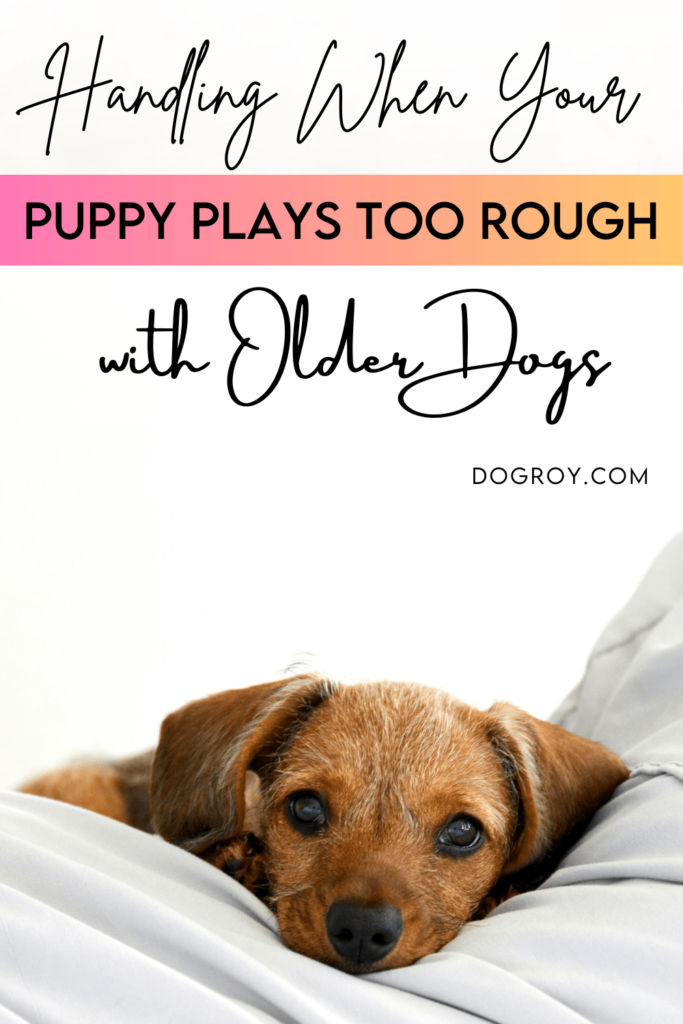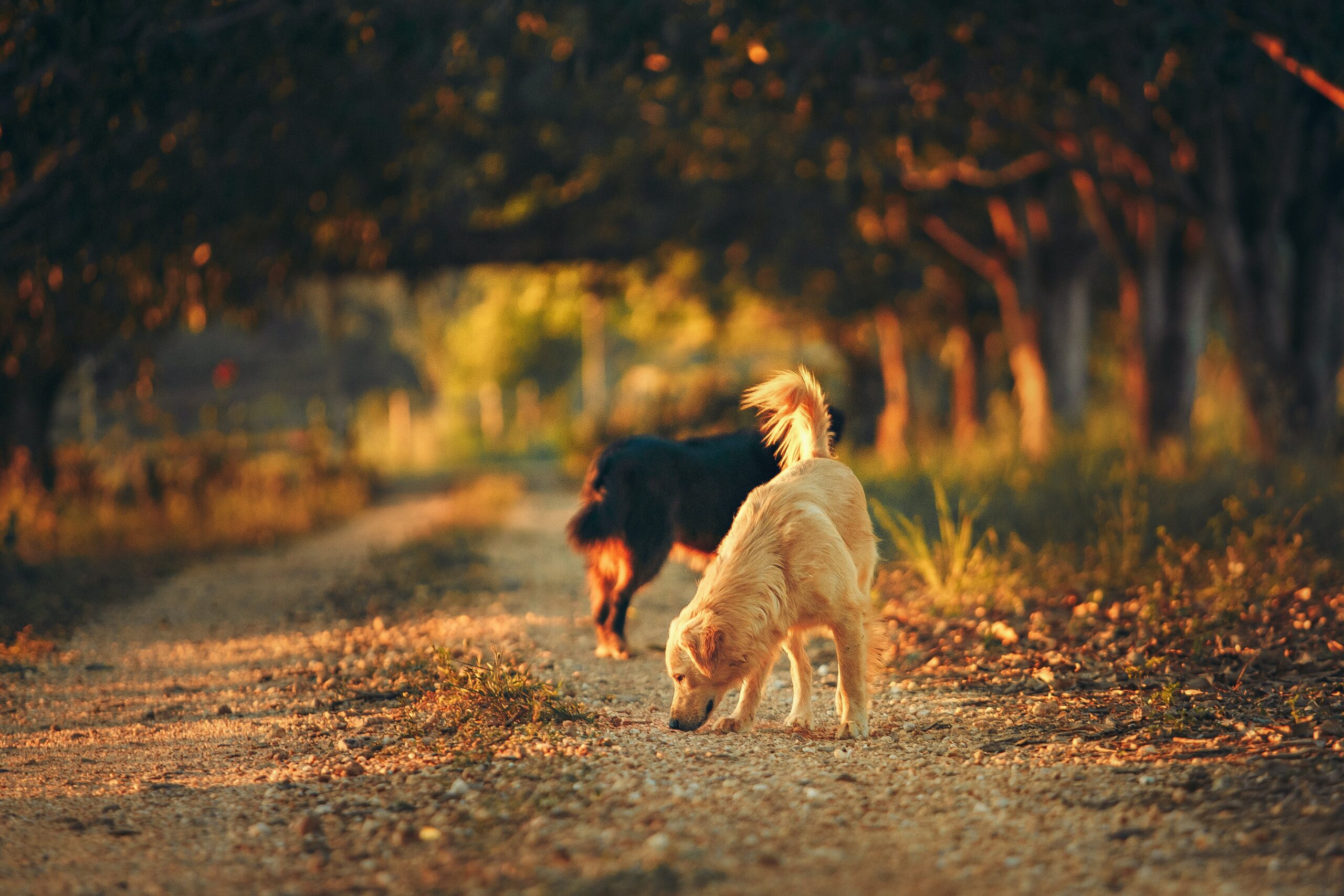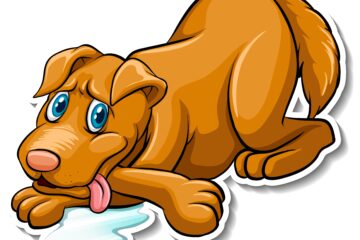Introducing a playful puppy to older dogs can be a source of joy, but it also comes with the challenge of ensuring that their interactions remain safe and enjoyable for all parties involved.
If your puppy tends to play too rough with older dogs, finding the right balance is crucial for fostering positive relationships.
In this guide – “Handling When Your Puppy Plays Too Rough with Older Dogs”, we’ll explore 8 effective tips to help you navigate and manage rough play, promoting a harmonious environment for your canine companions.
Table of Contents
Handling When Your Puppy Plays Too Rough with Older Dogs – Navigating Rough Play

1] Understanding Canine Communication
Overview: “Begin by understanding the language of play in dogs, recognizing body signals and vocalizations.”
Dogs possess a rich language of their own, especially during play.
Learning to interpret their signals is crucial in fostering positive interactions.
Understanding body language cues, such as raised hackles, tense posture, or a stiff tail, can signify discomfort or distress.
Are you familiar with the subtle ways dogs communicate, allowing you to intervene and maintain a harmonious play environment?
2] Supervision is Key
Vigilance during playtime is a non-negotiable aspect of ensuring a safe interaction between your puppy and older dogs.
This careful oversight allows you to step in promptly if play takes a rough turn.
Especially in the initial stages of their interaction, close supervision sets the tone for a positive and secure environment.
Tip: “Intervene if play becomes too rough, especially in the early stages of their interactions.”
How do you usually monitor play between your puppy and older dogs?
3] Teaching Gentle Play
Gentle play is a learned behavior for puppies, and your guidance is instrumental.
When rough play surfaces, redirecting their energy towards softer interactions is key.
Positive reinforcement, such as treats or praise, can be powerful tools in encouraging calm and gentle behavior.
How have you successfully redirected your puppy’s energy during play?
In the art of gentle play, puppies learn to dance harmoniously with their older companions.
4] Providing Age-Appropriate Toys
Playtime is an excellent outlet for your puppy’s energy, and choosing the right toys is crucial.
Age-appropriate toys not only cater to your puppy’s developmental stage but also contribute to a positive play experience with older dogs.
How do you select toys that engage your puppy without leading to overly rough play?
5] Separate Play Spaces
Dogs, like people, sometimes need personal space.
Establishing separate play areas for your puppy and older dogs ensures each has a retreat zone.
This not only reduces the chances of persistent rough play but also provides a quiet space for older dogs to unwind.
How have separate play spaces positively influenced the dynamics between your dogs?
• Establish separate play areas for puppies and older dogs • Ensures each has a retreat zone, reducing chances of persistent rough play • Provides a quiet space for older dogs to unwind and positively influences dynamics.
6] Training Commands
Basic commands play a crucial role in managing playtime dynamics.
Commands like “sit,” “stay,” or “gentle” offer a way to control the intensity of play.
Reinforcing these commands consistently helps create a positive association and fosters a more controlled play environment.
How have training commands contributed to a balanced playtime experience?
7] Interrupting Play for Calm Breaks
Overview: “Implement time-outs during rough play, interrupting to encourage calm breaks.”
Just like children, dogs benefit from occasional time-outs during play.
When play becomes too rough, interrupting the session and allowing a brief break can prevent situations from escalating.
This strategy promotes a calm environment and positive play interactions.
How do your dogs typically respond to short breaks during playtime?
8] Professional Advice
If challenges persist, seeking advice from a canine behavior specialist can provide valuable insights.
A professional assessment of the dynamics between your puppy and older dogs enables personalized strategies to address specific challenges.
Tip: “Personalized strategies can address specific challenges and ensure a balanced relationship.”
Have you ever consulted a specialist for guidance, and if so, what positive changes did you observe in your dogs’ interactions?
Handling When Your Puppy Plays Too Rough with Older Dogs: FAQs
How can I tell if play is becoming too rough?
Watch for signs of discomfort or distress in older dogs, such as flattened ears, growling, or attempts to escape. If these signs appear during play, it may indicate that play is becoming too rough.
Are certain dog breeds more prone to rough play?
Can older dogs teach puppies appropriate play manners?
Yes, older dogs often play a role in teaching puppies appropriate play manners. However, reinforcing these manners through consistent training is essential for effective learning.
How long does it take to teach a puppy gentle play?
The duration varies, but with consistent training efforts, puppies can learn gentle play within a few weeks. Patience and positive reinforcement are key elements in shaping desired behaviors.

Conclusion:
Balancing the dynamics between a playful puppy and older dogs requires a thoughtful approach and consistent guidance.
By implementing the 8 tips provided in this guide – “Handling When Your Puppy Plays Too Rough with Older Dogs” , you can create an environment where all dogs can engage in positive, enjoyable play.
Remember to monitor their interactions, set boundaries, and provide constructive feedback to ensure that playtime remains a rewarding experience for both your energetic puppy and their more seasoned companions.
With patience and proactive measures, you can foster a bond that allows for safe and satisfying play between dogs of different ages.





